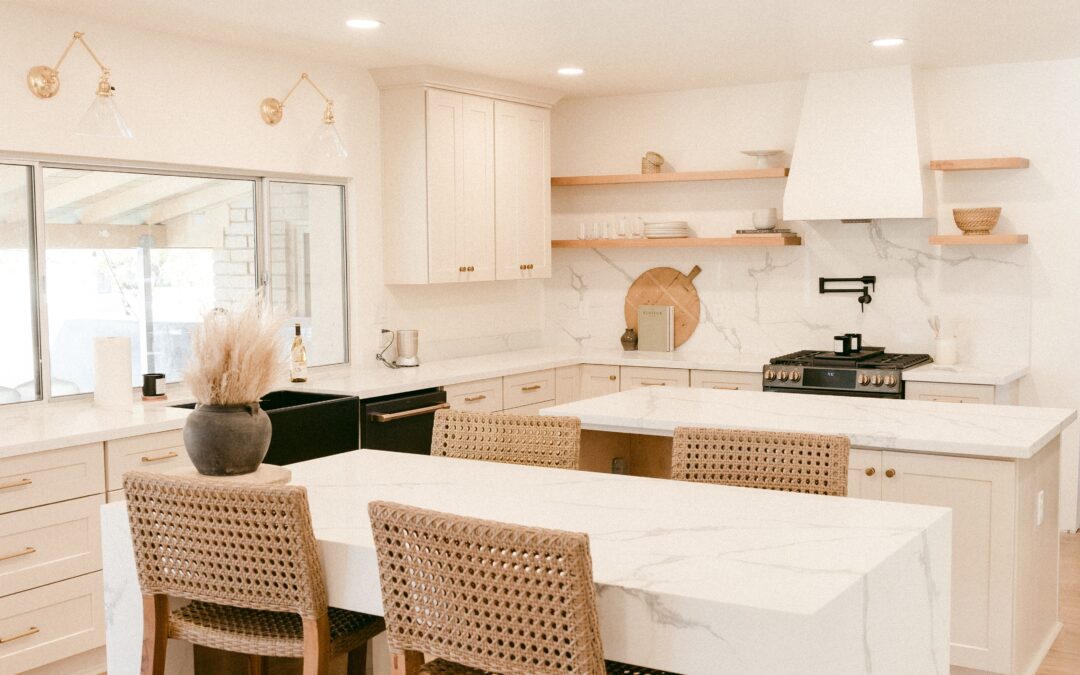When you decide to remodel your home, excitement builds as you envision the fresh, updated spaces. But as walls get torn down and rooms get turned upside down, stress can mount, and chaos ensues. Staying organized is key to keeping your sanity and achieving optimal results. By proactively addressing project plans, communication, design decisions and storage solutions, you’ll minimize disorder and enable a smoother renovation.
Create Detailed Project Plans
Start by listing every task, from contracting demolition to installing light fixtures, in a home remodel master to-do list. You should break down bigger steps like “remodel the kitchen” into smaller assignments like “order cabinets.” This makes each job more manageable. Be sure to build in some extra time for unexpected issues. Delays happen. As the work progresses, continue reviewing and updating the plans regularly. Comprehensive roadmaps mean you can spot problems early. Also, use project management software to map dependencies between tasks. For example, painting can only happen after walls are repaired. Tracking these connections makes adjusting timelines easier.
Organize Communication
Confused messages between you, contractors and designers can complicate any home remodel. Designate one main contact person to streamline things. This point person handles scheduling contractors, coordinating deliveries and monitoring progress. You’ll also want to set up a shared tracking document so everyone has access to contact details, open questions and the latest updates. Regular progress meetings, even quick weekly check-ins, also ensure all parties are on the same page. Consider keeping a running record of any change requests or additions that come up in verbal discussions. Documenting these ad hoc decisions will avoid miscommunications.
Document Design Decisions
In the excitement of a home remodel, it’s easy to second guess flooring choices or appliance models. Meticulously document all selections in organized project files, both digital and physical, as decisions get made. Collect images, material swatches, brochures or layout sketches that reflect the desired look. Use interior design apps to create different layouts and visualize finishes. Label all details like products, colors, dimensions and finishes in updated room files. Documenting removes guesswork later on. Create a central document that compiles all finished selections for faster reference.
Design Transitional Storage Solutions
Finally, incorporate storage solutions to contain the inevitable mess that comes with construction. Set up a temporary kitchen area with basics like a microwave, mini-fridge and coffee maker nearby to use when your actual kitchen gets demolished. Designate transition zones where you can isolate dust and debris, limiting its spreading throughout your home. Consider renting storage pods to house items you won’t need day-to-day during the chaos. Label boxes according to room for easier retrieval later.
Remodeling uproots your home. But organization helps limit stress-inducing disorder so you can stay excited for the final reveal. Comprehensive plans, streamlined communication, meticulous documenting and smart storage zones enable smoother renovations. And you’ll have peace of mind that your home remodel will deliver the refreshed spaces envisioned. The payoff makes the organized effort worthwhile.
FAQs
Q1: How long should I budget for a home remodel project?
A: Factor in an extra 25-30% timeline cushion for inevitable delays when planning the duration of your home remodel.
Q2: What if I change my mind about selections during my remodel?
A: Meticulously document all design decisions in organized files as soon as they are made so you have a reference if you second guess.
Q3: How do I limit construction mess during renovations?
A: Designate transition zones to isolate dust/debris and consider renting storage pods to contain the clutter created during work.
Photo by Jakob Owens on Unsplash


